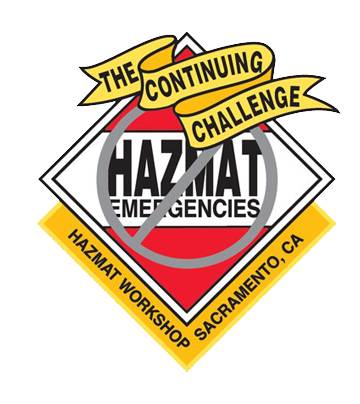Case study: Chemical security “Tool Box” to protect critical infrastructure and public health
Course Description
A network of standoff and point chemical detectors will provide real-time situational awareness and enhance situational awareness with visual imaging of the sources of chemical releases from up to 3 miles away at the Intercontinental Tank Terminal (ITC) located on the Houston Ship Channel and other critical infrastructure.
This course is being taught by Dr. George Lane, who in 2019 was Project Manager of the Port Security Program at the Center for Catastrophic Risk Management of the University of California at Berkeley funded by the California Office of Emergency Services.
Lane has been chemical security SME for the Committee on Transportation of Hazardous Materials of the U.S. Transportation Research Board and has 30 years of chemical security experience as Director of Chemical Security at Emergency Response Technology. In 2019 Dr. Lane created and taught “How to conduct a Hazardous Material Commodity Flow Studies” at the \”Continuing Challenge\”.
In March 2019, the release of a mixture of naphtha and Butane, hazardous chemicals stored in a tank at ITC in Deer Park, Texas went undetected for over 30 minutes.
After the chemicals ignited and spilled into the Houston Ship Channel, the United States Coast Guard (USCG) shut down the Houston Ship Channel for 3 days, interrupting the transportation of commerce on the Houston Ship Channel for 3 days, and resulted in a $1 billion loss for the Houston area petrochemical industry according to the Houston Chronicle.
According to the U.S. Chemical Safety Board, the ITC tank farm was not equipped with chemical sensors or video surveillance, so no alarms were activated to warn ITC personnel.
Chemical security measures planned for ITC using a network of chemical sensors would have remotely detected the chemical release at ITC in real-time before it ignited and securely communicated the release to the City of Houston EOC, preventing the fire, mitigating losses by keeping the Houston Ship Channel open to the transportation of commerce, and protecting public health.
A 2018 study by Martin Associates reported that Houston Ship Channel-related businesses contribute 1,350,695 jobs throughout Texas, contributing more than $339 billion in statewide economic value, 20.6% of the $1.6 trillion Texas Gross Domestic Product.
By 3 a.m. on Wednesday, March 20, 2019, ITC had successfully extinguished the tank farm fire at the ITC Deer Park terminal. On March 22, 2019, a section of the ITC tank farm dike wall failed, releasing a mixture of chemicals from the tanks, water, and firefighting foam to the surrounding waterways and the Houston Ship Channel.
When the secondary containment wall for the tank farm partially collapsed, USCG closed the Houston Ship Channel and deployed booms to capture released chemicals. USCG has estimated that closing the Houston Ship Channel to the transportation of commerce costs both the local and national economy over $400 million per day.
Starting on March 17, 2019, multiple local, state, and federal agencies began conducting air monitoring to collect data to determine the potential health impact of the ITC incident.
Air monitoring was conducted by ITC contractor, Center for Toxicology & Environmental Health (CTEH), Texas Commission on Environmental Quality (TCEQ), USEPA, and Harris County Fire Marshal’s Office (HCFMO).
Handheld monitoring with MultiRAE and UltraRAE instruments provided non-specific chemical detection. TVAs (Toxic Vapor Analyzers) were also used that provide only non-specific VOCs.
The two air monitoring vans currently in TCEQ’s inventory are equipped with instruments only capable of collecting non-specific data while stationary and require a time consuming process to deploy and calibrate at each monitoring location. Processing the volume of data resulted in 12-hour lag times. Hand-held monitors used by TCEQ staff were limited in their ability to produce data digitally and required manual data handing.
Providing standoff chemical surveillance would have provided real-time notification, detection, identification, and location of the ITC naphtha release as well as other chemical facilities and marine terminals from up to 3 miles away before the naphtha ignited.
Multiple chemical detection technologies, including FTIR (Fourier Transform Infrared) point detectors, OGI (Optical Gas Imaging) mounted on UAVs (Unmanned Aerial Vehicles), and IR Gas Cloud Imaging standoff chemical detectors must be integrated and operate together in the chemical security “Tool Box”. This course will describe the theory and operation of these technologies.
Therefore emergency response operating as a chemical security “Tool Box” can provide surveillance of critical infrastructure using multiple technologies, including standoff chemical detectors using IR gas imaging, portable FTIR detectors, and both video surveillance and OGI detectors on UAVs.
Course Instructor(s)
George Lane
CEU’s, General, EMS, and REHS: For those Students seeking CEU’s there is a code at the end of the presentation the needs to be entered in the “CEU’s, General, EMS, and REHS Form” under the 2021 Virtual Workshop Tab so you will receive credit.
